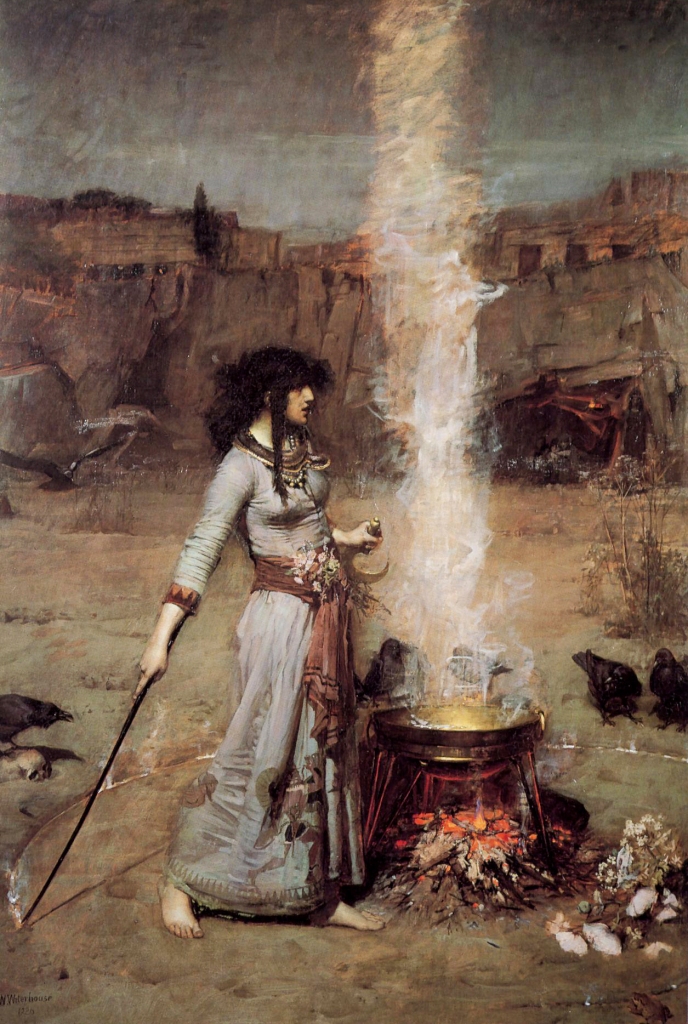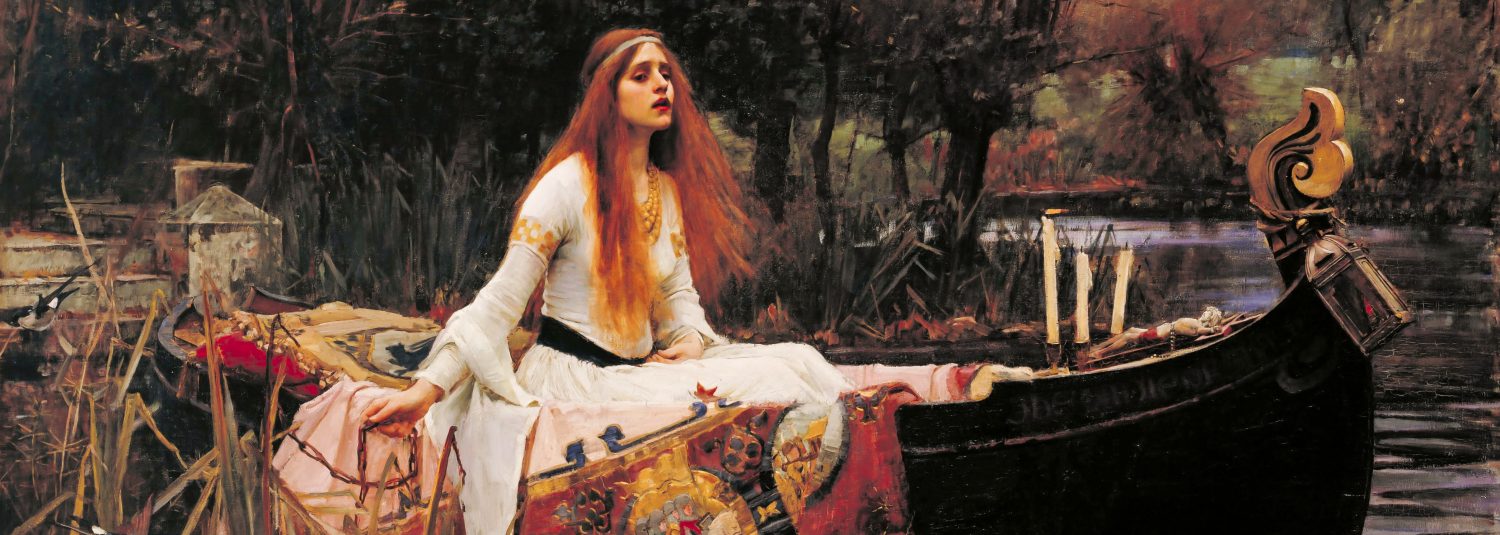
John William Waterhouse is recognised for his depictions of femmes fatales in many forms, often inspired by Greek mythology—Pandora, sirens, the sorceress Circe—or tragic heroines with literary origins such as Ophelia and the Lady of Shalott. Early in his career, Waterhouse produced several ‘orientalist’ works as well as many paintings of domestic life in the ancient world in the vein of Sir Lawrence Alma-Tadema and Frederic Leighton. The magic circle 1886 unites this foundation with the artist’s growing interest in the occult, but represents a stylistic departure from the carefully detailed clarity prized by the Victorians; it has a strong affinity with French painting of the era, especially the work of Jules Bastien-Lepage. (1) These elements, combined with the night-time setting, create a hazy, mysterious atmosphere suitable to the subject: a sorceress in the midst of performing a ritual. With a snake coiled around her neck, she draws a fiery circle around herself and her boiling cauldron. A conspiracy of ravens looks on and, in the background, hooded figures watch from the entrance of a cave. The cliff-top is lined with onlookers, an unlit city looming over them. The woman holds a sickle that she has used to cut the ingredients for her potion; a pile of poppies and other flowers lie beside the fire, and still more are thrust through the sash at her waist.
The intent of the painting is enigmatic, in part because so many cultural elements have been combined: the early Anglo-Saxon hairstyle and the Greek or Persian image of figures at battle on the otherwise medieval dress, the druidic knife and the arid, vaguely Mediterranean landscape present a confusing melange of civilisations. (2) While the original Pre-Raphaelite Brotherhood strove for authenticity through detail, Waterhouse here creates an atmosphere in spite of the details. Although the symbolic meaning is imprecise, it is likely that the intent of the spell is good: outside the protective circle sinister symbols loom, but inside is a powerful woman who is not vauntingly sexualised as are so many of Waterhouse and his contemporaries’ more dangerous subjects. Bathed in soft light, she is surrounded by flowers and wearing a girdle, symbolic of fertility rather than sexuality. (3)
While the painting itself has an air of the exotic, this relatively benign image of feminine power has more in common with the Victorian drawing room than is immediately apparent: séances and other spiritualist gatherings were the delight of the age and by no means incompatible with respectable womanhood. It has been suggested that the plume of steam rising from the cauldron is about to coalesce into form in the manner of ectoplasm, regularly encountered at such gatherings. (4) Although the painting was critically acclaimed when exhibited at the Royal Academy in 1886, its dramatism was lampooned by Punchcartoonist Harry Furniss, who pictured the actress Sarah Bernhardt—known for her enthusiasm for spiritualism and for sleeping in a coffin—stirring a cauldron with a giant spoon. (5)
– Bronwyn Campbell
1. Elizabeth Prettejohn, Peter Trippi, Robert Upstone and Patty Wageman, JW Waterhouse: The modern Pre-Raphaelite, Royal Academy of Arts, London, 2008, p 106.
2. Frances Fowle, ‘John Williams Waterhouse: The magic circle’, at tate.org.uk, accessed 16 July 2018.
3. Peter Trippi, JW Waterhouse, Phaidon Press, London and New York, 2002, p 90.
4. As above, p 77.
5. As above.
